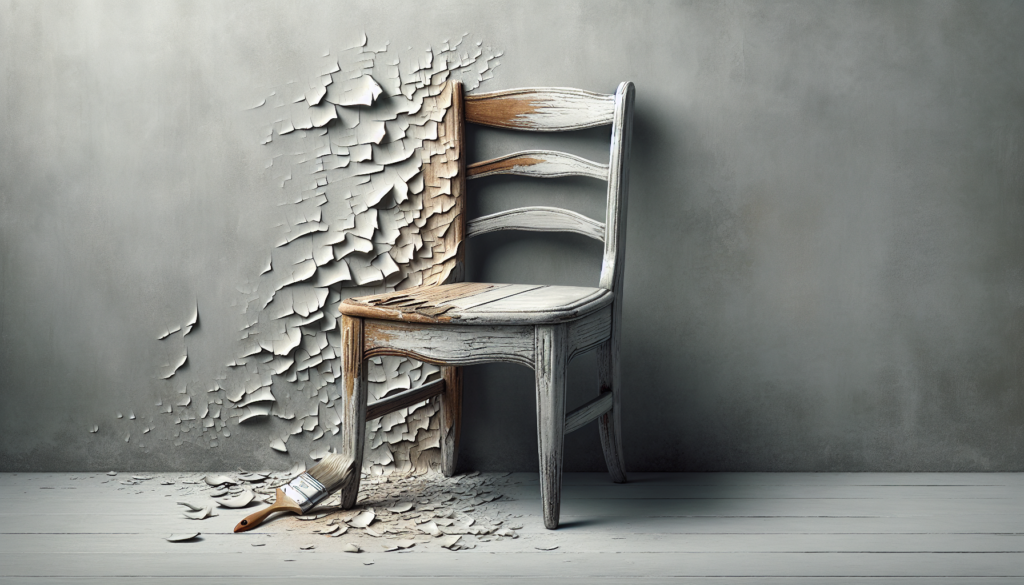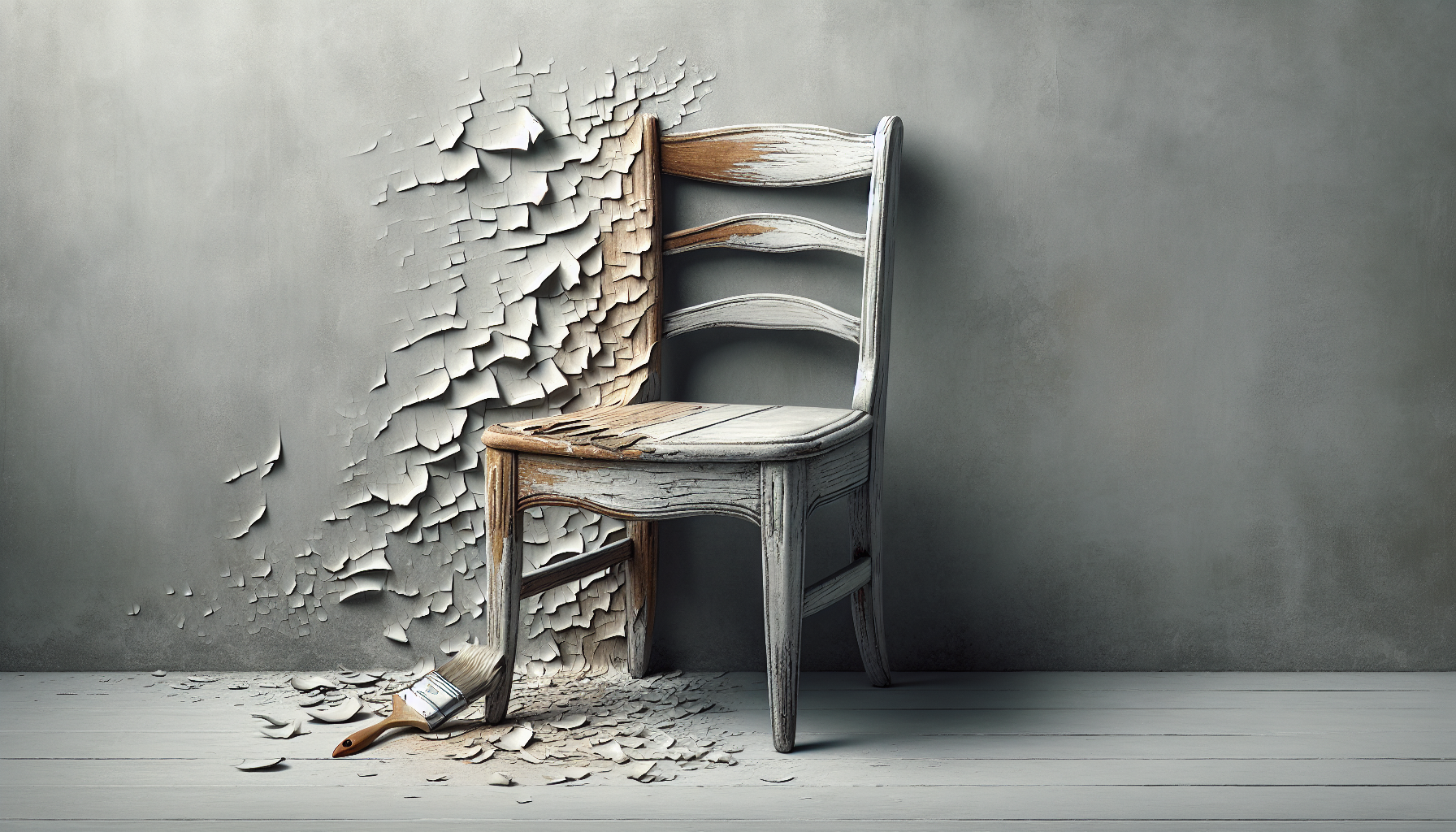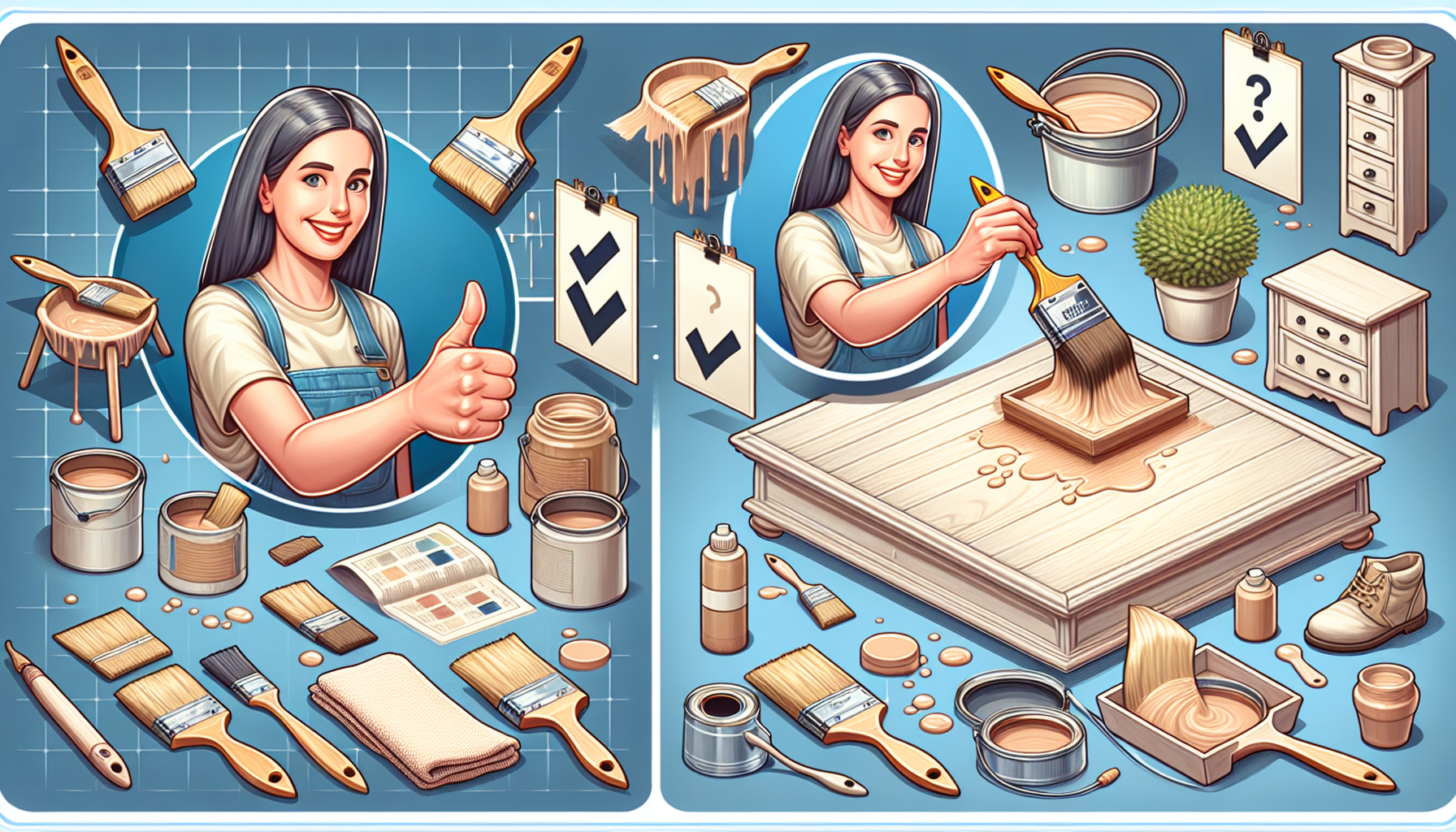In this article, you will discover a comprehensive guide on how to effectively and efficiently strip chalk paint. Whether you are an amateur DIY enthusiast or a professional decorator, learning the correct techniques for removing chalk paint is essential. We will explore various methods and tools that will help you achieve the desired results while protecting the underlying surface. By following these step-by-step instructions, you will be able to confidently tackle any chalk paint stripping project with ease. So, let’s dive into the world of stripping chalk paint and unlock the secrets to flawless paint removal.
Preparation
Before you begin the process of stripping chalk paint, it is important to gather all the necessary materials. This includes chemical strippers, sandpaper of various grits, a heat gun, a pressure washer, scrapers, putty knives, vinegar, water, paint stripper gel, and soy-based strippers. Having these materials on hand will ensure a smooth and efficient paint stripping process.
To protect your work area, it is essential to take the necessary precautions. Lay down drop cloths or plastic sheets to cover the surrounding surfaces and floors. This will prevent any accidental spills or paint splatters from damaging your work area. Additionally, consider using painter’s tape to protect any surfaces that you do not wish to strip the paint from.
When working with chemical strippers or other substances that may release fumes, it is crucial to open windows and ensure proper ventilation. This will help to minimize exposure to harmful chemicals and create a safer working environment.
Assessing the Paint
Before you begin the paint stripping process, it is important to assess the type of chalk paint you are dealing with. Different types of chalk paint may require different techniques and products for efficient removal. Determine whether the paint is water-based or oil-based, as this will guide your approach.
Check for any existing sealant or topcoat on the paint. Sealants can make the paint stripping process more challenging, as they create a barrier between the paint and the surface beneath. If a sealant is present, you may need to use stronger methods or products to effectively remove the paint.
Consider the condition of the paint. Older or more weathered paint may require additional steps and techniques to fully strip away. It is important to have realistic expectations about the time and effort that may be required to achieve the desired results.

Using Chemical Strippers
When using chemical strippers, it is crucial to choose the right one for the job. Different chemical strippers are designed for different types of paint and surfaces. Read the labels carefully and select a stripper that is suitable for removing chalk paint.
After selecting the appropriate chemical stripper, read and follow the instructions provided by the manufacturer. These instructions will provide guidance on how to apply the stripper, how long to let it sit, and how to remove the softened paint.
Apply the stripper evenly across the painted surface, ensuring that it covers the entire area you wish to strip. Use a brush or sponge to ensure an even application and distribution.
Allow the stripper to work its magic by letting it sit and bubble the paint. The amount of time required will depend on the specific product and the thickness of the paint. Follow the manufacturer’s instructions to determine the optimal wait time.
Once the paint has been softened by the stripper, use a scraper to remove the paint. Be gentle yet firm, ensuring that you remove all the softened paint without damaging the underlying surface. Repeat this process until all the paint has been successfully stripped.
Sandpaper Method
The sandpaper method is another effective approach to stripping chalk paint. Start by selecting the appropriate grit sandpaper based on the condition and thickness of the paint. Finer grits are suitable for lighter removal, while coarser grits are better for thicker or stubborn paint.
Begin sanding the chalk paint, applying even pressure to the surface. Move in a circular or back-and-forth motion to ensure that you cover the entire painted area. As you sand, the paint will gradually be removed, exposing the underlying surface.
Continue sanding until all traces of paint have been fully removed. Be cautious to not damage the underlying surface, especially if it is delicate or prone to scratches. If necessary, switch to a finer grit sandpaper to gently smoothen the area after the paint has been stripped.
After sanding, it is essential to clean the area to remove any residue or dust from the paint stripping process. Use a damp cloth or sponge to wipe away any excess residue and ensure a clean, smooth surface for further treatment.

Heat Gun Technique
Using a heat gun can be an effective method for stripping chalk paint, especially for smaller or intricate surfaces. Begin by choosing a heat gun that is suitable for the job. Ensure that it has adjustable temperature settings and a nozzle that provides concentrated heat.
Apply heat to a small area of the paint, holding the heat gun a few inches away from the surface. Move the heat gun back and forth, evenly distributing the heat to soften the paint. As the paint loosens, gently scrape it away using a putty knife or scraper.
Repeat this process for the entire surface, working in small sections at a time. Take breaks if necessary to avoid overheating the area or the heat gun. It is important to be patient and thorough for effective paint removal.
Ensure safety precautions while using a heat gun. Wear heat-resistant gloves and protective eyewear to shield yourself from potential burns or flying paint particles. Work in a well-ventilated area to minimize inhalation of fumes or smoke.
Pressure Washer Method
For larger surfaces or outdoor applications, using a pressure washer can be an efficient way to remove chalk paint. Begin by preparing the pressure washer according to the manufacturer’s instructions. Ensure that it is clean and in proper working condition.
Adjust the pressure settings of the pressure washer to a suitable level. Start with a lower pressure and gradually increase it as needed, depending on the thickness and stubbornness of the paint.
Start spraying water on the painted surface, working in sections from top to bottom. The pressurized water will gradually remove the chalk paint, exposing the surface beneath. Move the pressure washer nozzle back and forth to evenly distribute the water and cover the entire area.
Once all the paint has been removed, dry the surface thoroughly to prevent any potential water damage. You can use clean towels, sponges, or allow the surface to air dry depending on the specific environment and conditions.
Alternative Techniques
While chemical strippers, sandpaper, heat guns, and pressure washers are commonly used methods, there are alternative techniques worth considering.
One alternative technique is using a mixture of vinegar and water. This natural solution can help soften the paint, making it easier to remove. Apply the mixture to the painted surface, let it sit for a few minutes, and then use a scraper or brush to remove the softened paint.
Another alternative is using a paint stripper gel. These gels are applied similarly to chemical strippers but have a thicker consistency, allowing them to cling to vertical surfaces for longer without dripping. Follow the instructions provided by the manufacturer for optimal results.
For larger surfaces or more industrial applications, sandblasting can be explored. Sandblasting involves using high-pressure air and abrasive materials to remove paint. This method should only be done by professionals who are experienced in operating sandblasting equipment.
If you prefer chemical-free options, soy-based strippers are available in the market. These strippers are made from natural ingredients and can be a safer and more eco-friendly alternative. Follow the instructions provided by the manufacturer for best results.
Removing Residual Paint
After completing the paint stripping process, it is important to inspect the surface for any remaining paint or residue. Use appropriate methods such as sanding, scraping, or applying chemical strippers to remove any traces of paint.
Depending on the surface and the desired finish, you may need to clean and prepare it further. This can include sanding, priming, or applying a new topcoat before proceeding with any further treatment or refinishing.
Safety Precautions
When stripping chalk paint, it is vital to prioritize safety. Wear protective clothing such as long sleeves, pants, and closed-toe shoes to prevent contact with chemicals or paint particles. Use gloves to protect your hands from potential burns, irritation, or prolonged exposure to chemicals.
Ensure good ventilation by working in a well-ventilated area or using fans and open windows. This will help minimize the inhalation of fumes, smoke, or dust particles that may be released during the paint stripping process. If necessary, consider wearing a respirator for added protection.
Dispose of chemicals and waste responsibly. Follow local regulations and guidelines for proper disposal methods. Do not pour chemicals down drains or dispose of them in the regular trash. Take the necessary steps to avoid any negative environmental impact.
Finishing Touches
After the paint has been fully stripped, inspect the surface for any imperfections or damage. Repair any flaws or damages by filling in cracks, sanding rough spots, or applying a suitable filler or putty.
Consider applying new paint or finish to the surface. This can include priming and painting, staining, or applying a clear coat to protect and enhance the appearance of the stripped surface. Follow the appropriate techniques and products for the desired finish.
In conclusion, stripping chalk paint requires proper preparation, assessment of the paint, and the use of suitable techniques and tools. Chemical strippers, sandpaper, heat guns, and pressure washers are effective methods to consider. Always prioritize safety and take the necessary precautions while working with chemicals or tools. Lastly, consider the desired finish and take the appropriate steps to ensure a smooth and successful paint stripping process.



